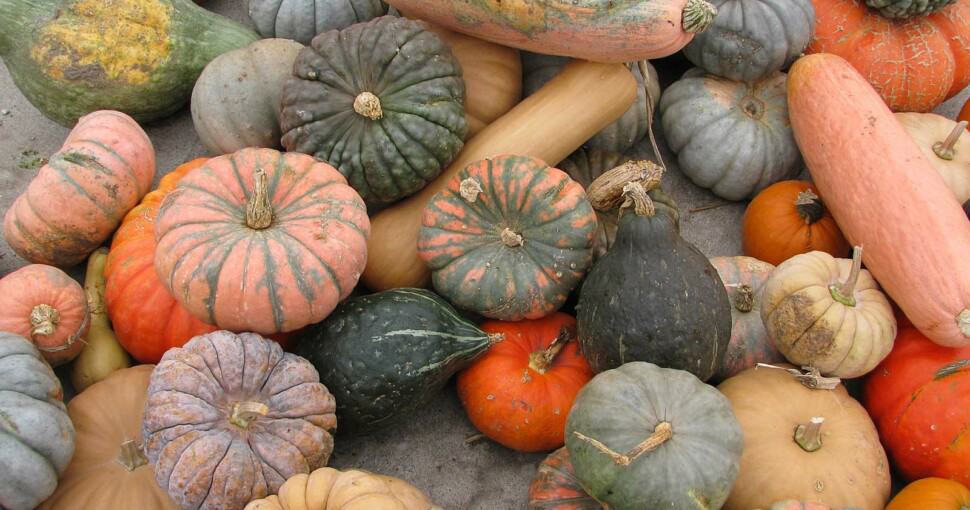Squash have been domesticated and cultivated for over eight thousand years. They have become embedded in our dietary habits and culture. Halloween would not be the same without pumpkins. Some ancient cultures dried out squash and used them to carry water and store food.
Squash belong to the Cucurbitaceae or gourd family and the genus Cucurbita. They are known by various names around the world. Pumpkin, butternut, gem squash, marrows, pattypans, winter squash, and summer squash are all terms used in English to refer to edible Cucurbita fruit.
Squash grow on vines which may be perennial or annual. Annual squash plants need a constant water supply, but perennials can tolerate dry conditions for short periods. Most cultivated squashes are grown as annuals.
Squash plants grow stems that may be fifteen to fifty feet with tendrils to attach the vine to other plants or ground structures. The stems are usually green but can become woody in some cultivars or perennial species. Squash plants sprawl over a large proportion of the ground.
Most squash plants have five-lobed leaves attached to the main vine by long petioles (leaf stalks). The stems and petioles are commonly hairy and rough to the touch.
The leaves may be smooth, but most are hairy. They vary in color and can be various shades of green, and some have white markings along the leaf vein paths. Squash bear yellow flowers which wilt after fertilization and produce a pepo or squash.
Squash fruit have enormous variability in color, size, and shape. Some may weigh several hundred kilograms, and some may be just a few grams. They can be red, green, white, yellow, and striped. Botanists refer to the Cucurbita fruit as a ‘pepo.’
1. Cucumbers
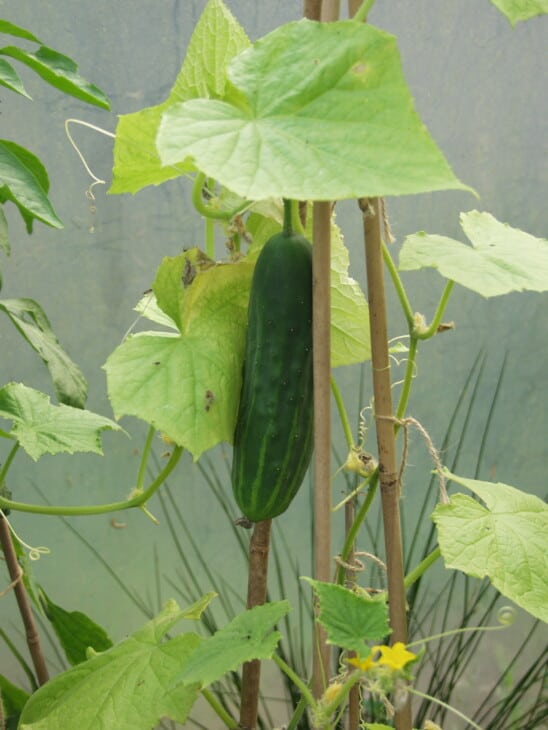
Cucumbers belong to the same family as squash. Their botanical name is Cucumis sativus, and they first grew naturally in Southern Asia. They became a popular vegetable, and cucumbers are now cultivated worldwide.
Cucumbers grow as a creeping vine that attaches itself by tendrils to supporting structures. The main stem roots itself in the ground. Scientists have shown that cucumbers will grow in soil-less mediums, making them a popular crop for hydroponics.
Cucumbers have five-lobed leaves, much like squash. The leaves are usually smaller than squash leaves, but this can vary according to the cultivar. Cucumbers produce a yellow flower with prominent stamens similar to squash flowers.
The flowers give rise to a pepo or cucumber, an elongated cylindrical fruit that varies from two to twenty-four inches. They can have a diameter of up to four inches.
Cucumbers can be divided into three categories; seedless, slicing, and pickling. There are hundreds of cucumber cultivars to choose from in each category.
Cucumbers should not be left on the vine to grow to maximum proportions as they become bitter and unpleasant to eat. Picking cucumbers regularly encourages the plant to produce more flowers and, therefore, more cucumbers.
2. Watermelons
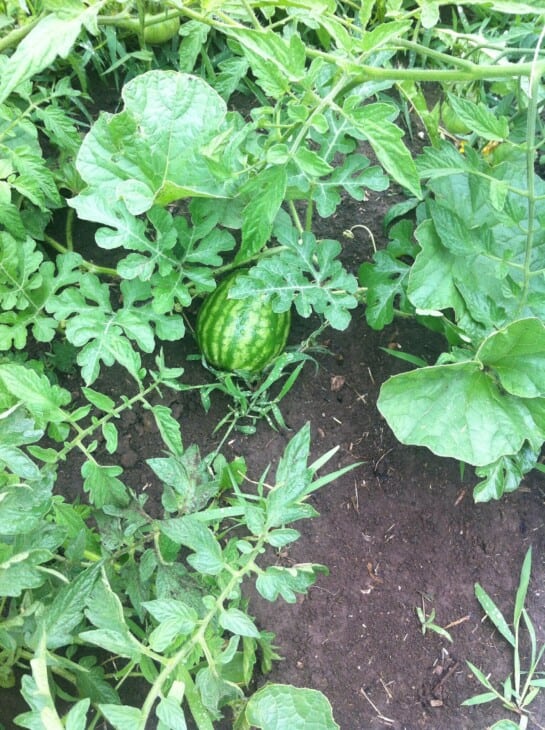
Watermelon plants like squash are part of the Cucurbitaceae family. The scientific name for watermelon is Citrullus lanatus. The origins of watermelons are not definite, but botanists postulate that the first watermelons grew in Sudan and Libya.
There are records of watermelons being grown by people in Northern Africa and Egypt in 2000 BC. China is currently the largest producer of watermelons. Watermelons are annual plants.
Watermelons, like squash, grow on vines that can be ten feet long. The vines may creep along the ground or climb up structures. Tendrils attach the stem to structures or objects on the ground.
The leaves are attached by petioles which may have brownish hairs on them. The leaves are two to eight inches long and one to six inches wide. They have three lobes and are generally bright green.
The watermelon plant has white or yellow flowers that are either male or female. Female flowers can be identified by the presence of a small pepo (watermelon) at the base of the flower. The flowers are supported by one-to-two-inch-long stems.
The flower gives rise to large fruit, which is usually red inside with many brownish-black seeds. The skin of the watermelon varies with cultivars, but in most common types, it has dark green and light green stripes.
Watermelons grow best in warm climates with a long growing season. They are more difficult to grow in regions where summer is short, and the climate is cold. Watermelons take seventy to one hundred days to produce a harvest when planted from seed.
Related: 5 Plants That Look Like Watermelon
3. Cantaloupe
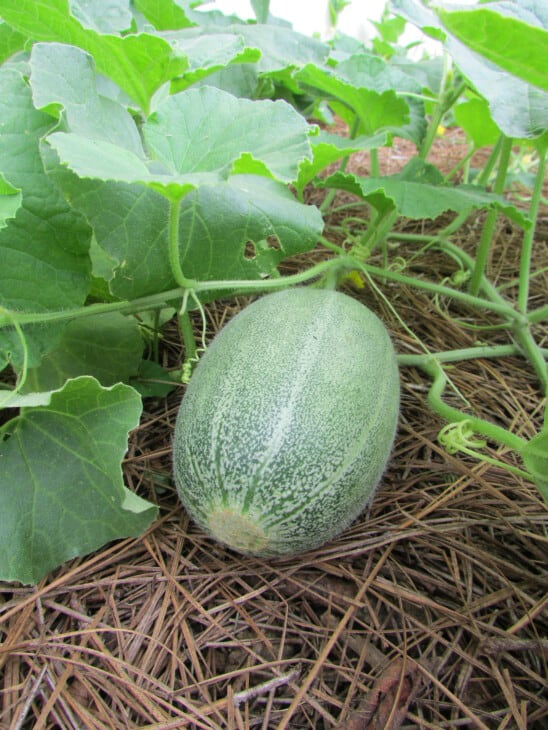
Cantaloupes are plants with many names. In Australia, they are known as rock melons, and in Southern Africa, they are known as spanspek. They are also called sweet melons in other places around the world.
The scientific name for cantaloupes is Cucumis melo, and they belong to the Cucurbitaceae plant family. They are part of the muskmelon species and originated in India and Persia.
Cantaloupes grow on annual vines like squash. They can grow up a trellis or grow prostrate on the ground. They take up considerable space, so many gardeners prefer to let cantaloupe plants climb up structures.
Cantaloupes have lobed leaves similar to squash plants. They bear bright yellow flowers that are either male or female. After pollination, the flower takes thirty-five to forty-five days to produce a pepo or cantaloupe that can be harvested.
Related: When Are Cantaloupes In Season?
The cantaloupe initially has green skin, but as the fruit ripens, it changes to light brown. The cantaloupe skin becomes netted. There are rough raised ridges that look like a net on the outer skin.
The inside of the cantaloupe is orange with creamy-white seeds. It has a sweet distinctive flavor and smell.
4. Calabash
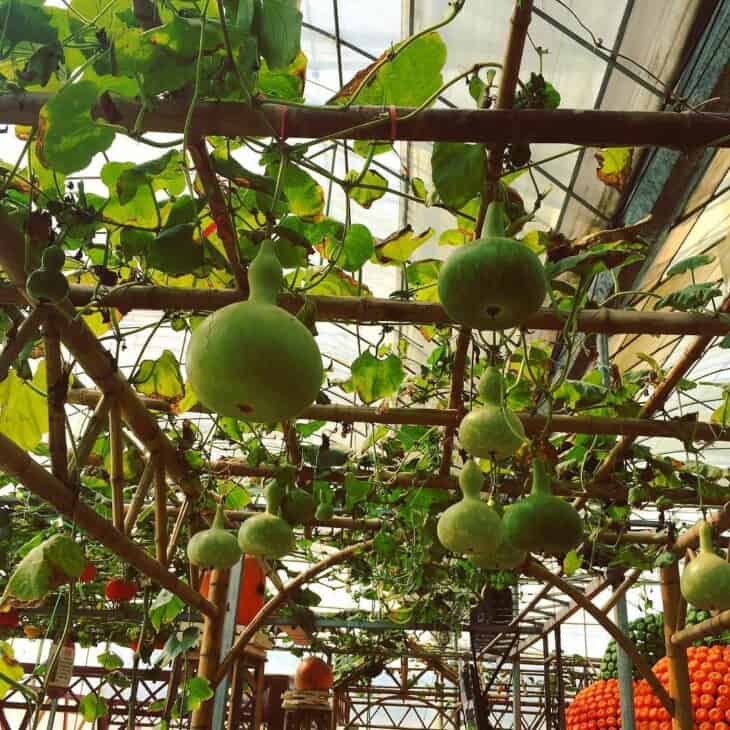
The calabash is another plant with a multitude of names. In some regions, it is known as a bottle gourd, a birdhouse gourd, a white-flowered gourd, a long melon, a New Guinea bean, opo squash, or a Tasmanian bean.
Like squash, calabashes grow on vines as they are part of the Cucurbitaceae family. The botanical name for calabash plants is Lagenaria siceraria.
The calabash plant has lobed leaves and produces white flowers which bloom at night. The flowers are pollinated by moths which visit the male flower and carry the pollen to the female flower.
Once the female flower is pollinated, the flower dies, and a calabash fruit or gourd develops. These are usually green and may be picked and eaten when young. As the calabash grows, it hardens and darkens and loses its taste. Mature calabashes are dried after picking and used as a storage container, a cup, or fashioned into a musical instrument.
5. Nasturtiums
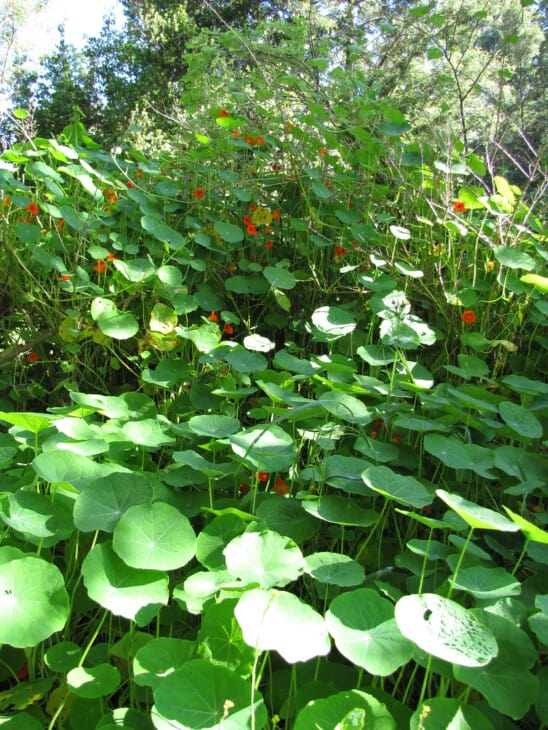
Nasturtiums (Tropaeolum majus) are a plant that looks similar to squash but is not related in any way. Nasturtiums are indigenous to South and Central America but have become popular with gardeners in many countries.
Nasturtiums are hardy plants that tolerate dry conditions and poor soil. They do best in well-drained soil and produce the best flowers in soil with a low level of compost. If the soil is rich and fertile, the plants produce magnificent foliage but few flowers.
Nasturtiums grow as a vine and spread to fill spaces in flower beds. Their bright green leaves are shaped like a shield with a visible petiole on the leaf surface.
The flowers are similar to squash flowers, but they may be yellow, orange, or red, making a wonderful display when planted en masse. Some flowers have dark centers at the base of the five petals.
Nasturtium flowers, leaves, and seeds can be eaten and are a popular addition to salads. They have a peppery mustard flavor and add bright colors to food.

